Want to know what is the largest forest area in the world? Every species in the world is dependent on forests in some way or the other. There is a particular species found in every forest of trees or of animals. Forests play a major role in the life of human beings.
Additionally, forests cover more than 31 percent of the world’s land area. More than half of the world’s forests are in Brazil, Canada, China, the Russian Federation and the United States. Which 10 forest cover the largest land area in the world? Here is a list of those top 10 Largest Forests in the world by area.
10. Sinharaja Forest Reserve – 34 sq mi
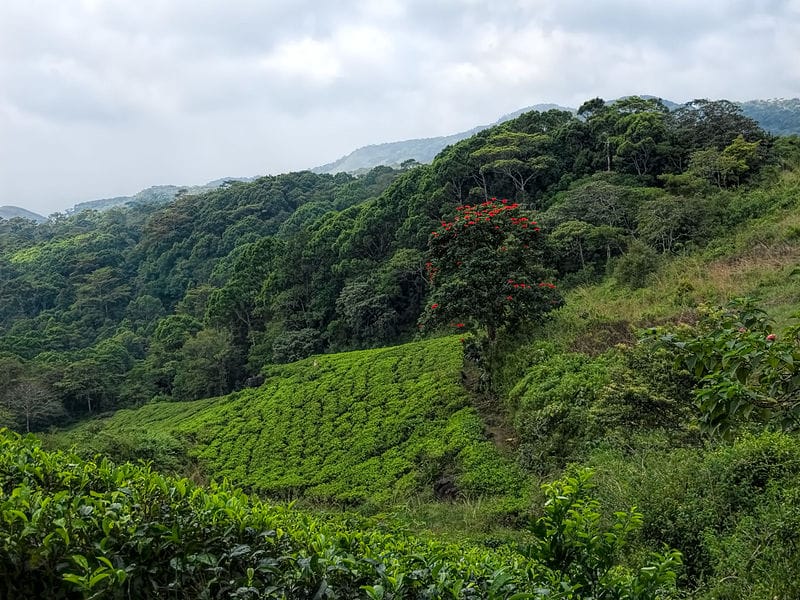
Sinharaja Forest Reserve is the largest forest in Sri Lanka and one of the top 10 largest forests in the world. It has been designated a Biosphere Reserve and a World Heritage Site by UNESCO.
It is home to more than half the endemic species of Sri Lankan animals, including butterflies, amphibians, birds, snakes and fish species.
Additionally, it is home to 95 percent of endemic birds, including the elusive red-faced malkoha, green-billed kukal, and the Sri Lanka blue magpie. Notably, Sinharaja Forest Reserve receives rainfall for about ten months a year, with an average temperature of around 20 to 25 °C. It covers an area of about 89 square kilometers.
- Location: Sri Lanka
- Area: 34 square miles (89 square km)
See Also: Longest Rivers In The World
09. Mindo-Nambillo Cloud Forest – 74 sq mi
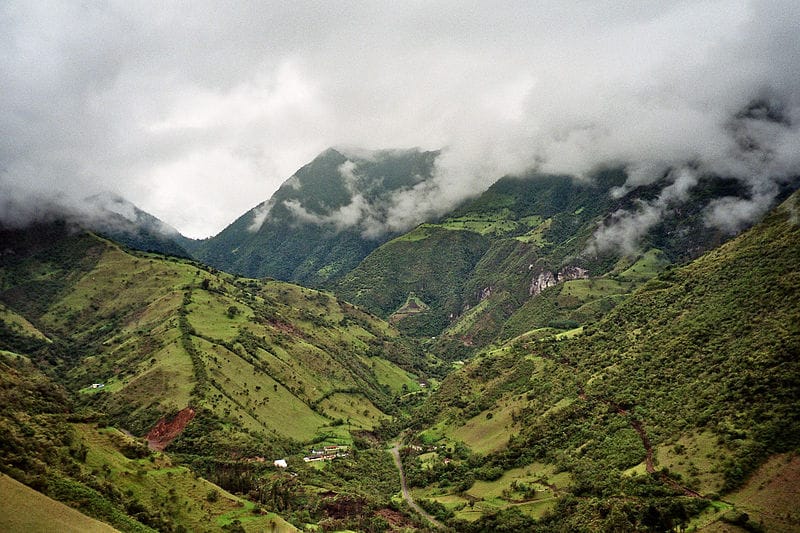
Mindo-Nambilo Cloud Forest South America is a tourist attraction. Cloud forests tend to be more green, cooler than rainforests. With an area of 74 square miles, it is one of the top 10 largest forests in the world.
In addition, the Mindo-Nambilo Cloud Forest is home to over 450 different species of birds. The reserve is a popular wilderness among eco-travellers due to its incredible diversity of wildlife and plants.
The Mindo-Nambillo Cloud Forest is home to more than 1,600 different types of winged animals, frogs, butterflies, and a wide variety of creatures. Also, tribal communities (Yambo-Nigua people) reside in this forest.
- Location: South America
- Area: 74 square miles (192 square km)
08. Kinabalu Park – 291 sq mi
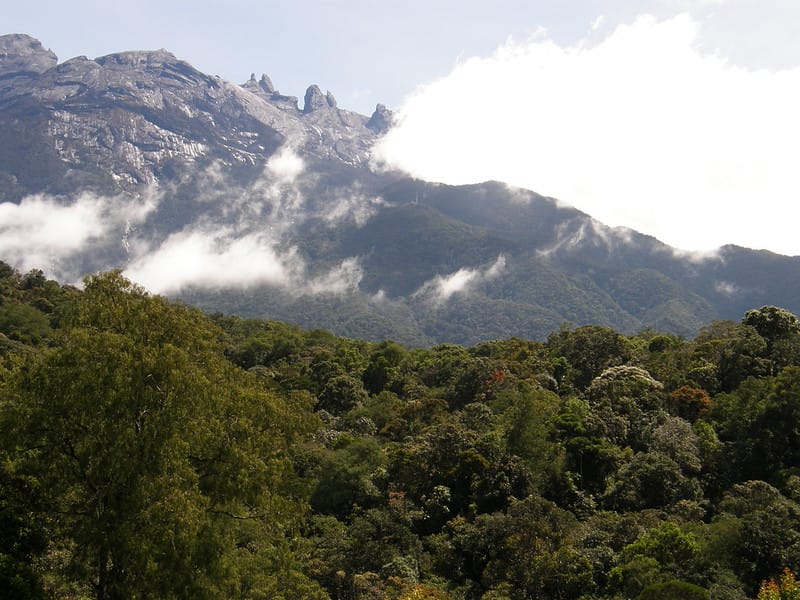
Kinabalu Park is Malaysia’s first World Heritage Site. It was designated for “Outstanding Universal Values” by UNESCO in December 2000. Kinabalu has over 4,500 species of a variety of flora and fauna, including 326 bird and about 100 mammal species, and over 110 species of land snail.
The Kinabalu Giant Red Leech and the Kinabalu Giant Earthworm are the two endemic animal species here. Also, Kinabalu is one of the top 10 largest forests in the world, covering an area of 754 square kilometers.
In addition, it surrounds the highest mountain in Malaysia, called Mount Kinabalu. And it is the smallest non-volcanic mountain in the world. Animals such as mouse deer, squirrels, and tree shrews can be commonly seen in Kinabalu.
- Location: Sabah, Malaysia
- Area: 291 square meter (754 square km)
07. Daintree Rainforest – 460 mi sq
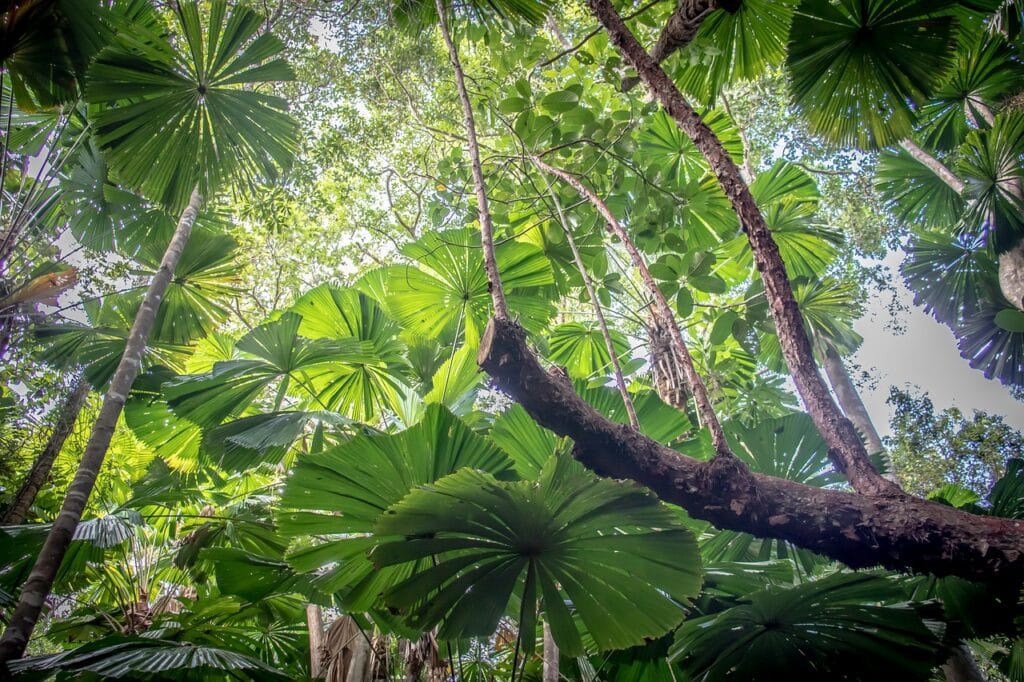
The Daintree Rainforest is one of the top 10 largest forests in the world located on the north-east coast of Australia. It forms part of the largest continuous area of tropical rainforest on the Daintree Australian continent, at approximately 1,200 square kilometers.
Daintree Rainforest is one of the oldest rainforests in the world. This rainforest is named after Australian geologist and photographer Richard Daintree. In addition, the Daintree Rainforest is listed as a World Heritage Site, and is known for its beautiful lush canopy and vines, forest-covered mountains and valleys.
The Daintree Rainforest is home to 30% of Australia’s frog, reptile and marsupial species, and 90% of bat and butterfly species. On the other hand, 7% of the country’s bird species can be found in this region.
Additionally, there are over 12,000 species of insects in the rainforest. Its principal wildlife are the saltwater crocodile and the southern cassowary.
- Location: Queensland, Australia
- Area: 460 square miles (1,200 square km)
06. Sundarbans – 3,900 sq mi
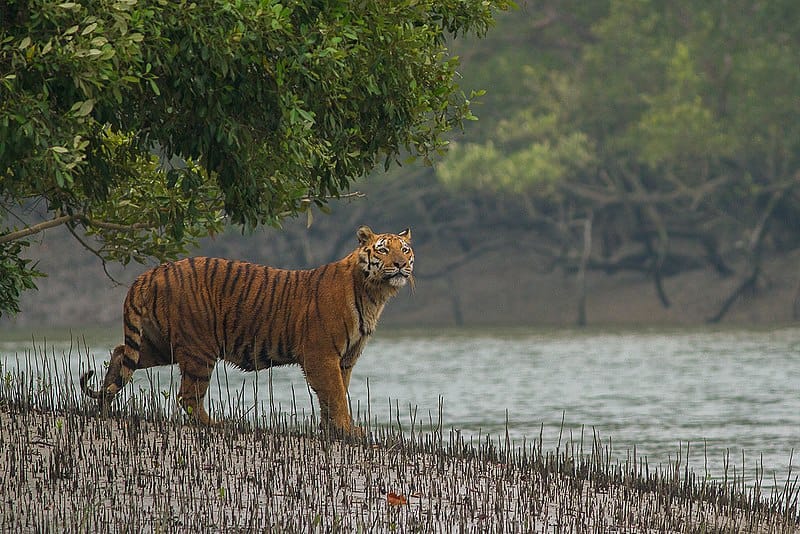
The Sundarbans is the fifth largest forest area in the world spread over India and Bangladesh. It is named after Sundari trees, which are the tallest in the region. The Sundarbans is a mangrove area in the delta formed by the confluence of the Ganges, Brahmaputra and Meghna rivers in the Bay of Bengal. Most of it is mud and water, only 40 percent is forest.
In addition, four protected areas in the Sundarbans (Sundarbans National Park, Sundarbans West, Sundarbans South and Sundarbans East Wildlife Sanctuaries) have been listed as UNESCO World Heritage Sites.
The Sundarbans mangrove forest covers an area of about 10,000 square kilometers (3,900 sq mi), with 60 percent in Bangladesh and 40 percent in India.
The Sundarbans is the famous home of the Bengal Tiger, and one of the last protected places for them to live in Bangladesh. But it also boasts many other notable animal species including the Ganges River dolphin, cobra, Indian python and crocodile. It is also home to 290 species of birds, 120 fishes, 42 mammals, 35 reptiles and 8 amphibian species.
- Location: India & Bangladesh
- Area: 3,900 square miles (10,000 square km)
05. Rainforest of Xishuangbanna – 7,422 sq mi
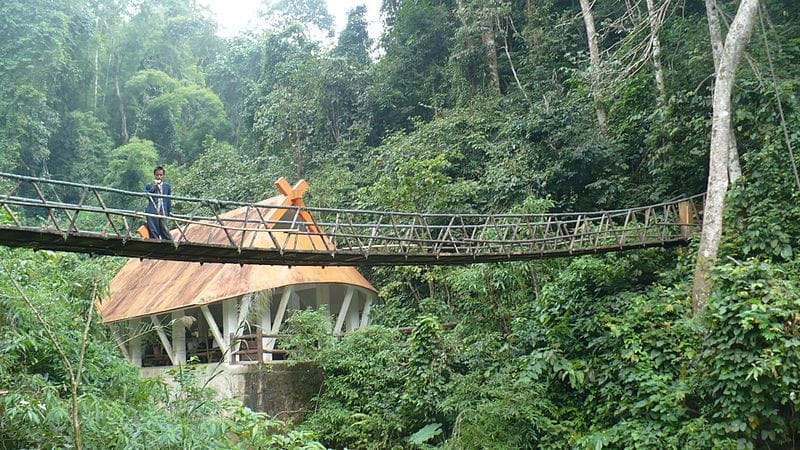
The Xishuangbanna rainforest in China is Asia’s largest and one of the largest forests in the world. Tropical vegetation is abundant in this rainforest. Also, it contains 16% of the total plant diversity of China. Including more than 5,000 species of vascular plants.
In addition, the Xishuangbanna has several endangered animal species, including the Asian elephant, the Indo-Chinese tiger, and the green peacock. Since this nature reserve is surrounded by mountains, the climate here is very humid.
It is protected from cold north winds and is open to oceanic moisture. Also the Rainforest of Xishuangbanna is the fifth largest forest in the world with an area of 19,223 square km.
- Location: Yunnan Province, China.
- Area: 7,422 square miles (19,223 square km)
04. Tongass – 26,100 sq mi
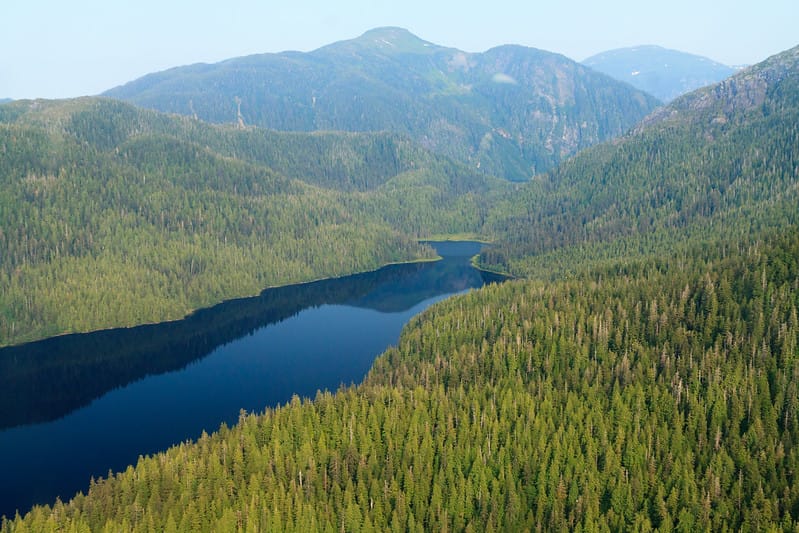
The Tongass in southern Alaska is the largest national forest in the United States. About a third of it is managed as full forest. Additionally, much of Tongass’ area is temperate rainforest. It is far enough away to be home to many species of endangered and rare flora and fauna.
Also, the Tongass is one of the best places to visit, and the biggest tourist attraction here is its glaciers. Some of Alaska’s 100,000 glaciers manifest themselves as giant ice sheets.
In addition, bears are common in Tongass and can be seen fishing in the creeks here. Bald eagles are almost always present here. The Tongass is one of the largest forests in the world with an area of about 26,100 square miles.
- Location: Alaska U.S.
- Area: 26,100 square miles (68,000 square km)
03. Valdivian Temperate Rainforest – 95,800 sq mi
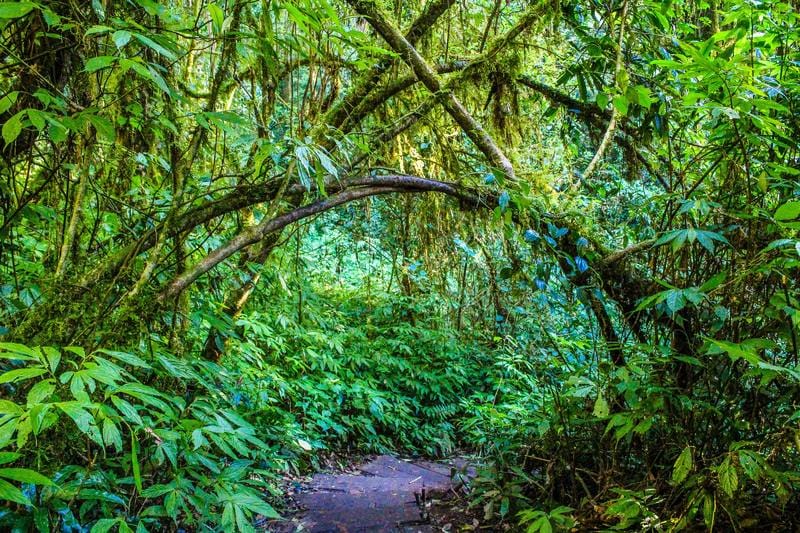
The Valdivian temperate rainforest extends along the west coast of South America to Chile and Argentina. It’s named after the city of Valdivia. The Valdivian temperate rainforest receives a high amount of rainfall.
Additionally, the Valdivian temperate rainforest includes evergreen trees, coniferous trees and endemic monkey puzzle trees, as well as understory vegetation such as bamboo and massive ferns.
The rainforest is home to many fascinating creatures such as the world’s smallest cat, the Kodkod, and the world’s smallest deer, the Southern Pudu. The Valdivian temperate forests are the third largest forest area in the world with an area of 248,100 square kilometers.
- Location: Chile & Argentina
- Area: 95,800 square miles (248,100 square km)
02. Congo Rainforest – 1,400,000 sq mi
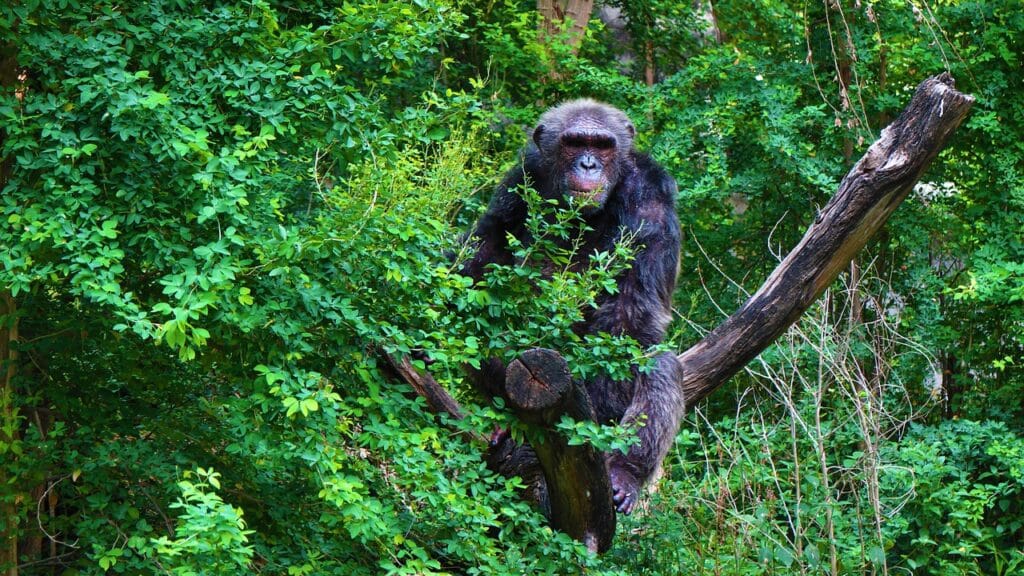
The Congo rainforest is the largest in Africa and the second largest in the world. It covers most of Africa’s central region (3.62 million square kilometers), and accounts for 60 percent of its lowland forest area.
Additionally, the rainforests of the Congo are a wide belt of lowland tropical moist broadleaf forests. It extends to the basin of the Congo River and its tributaries in Central Africa.
The Congo rainforest is known for its high level of biodiversity. It includes over 600 tree species and 10,000 animal species. The Congo Basin is known for its large, charismatic species of wildlife, including lowland gorillas.
Its well-known species include forest elephants, gorillas, chimpanzees, okapis, leopards, hippopotamuses and lions.
- Location: Africa
- Area: 1,400,000 square miles (3,620,000 square km)
See Also: Largest Countries In The World by Area
01. Amazon Rainforest – 2,300,000 sq mi
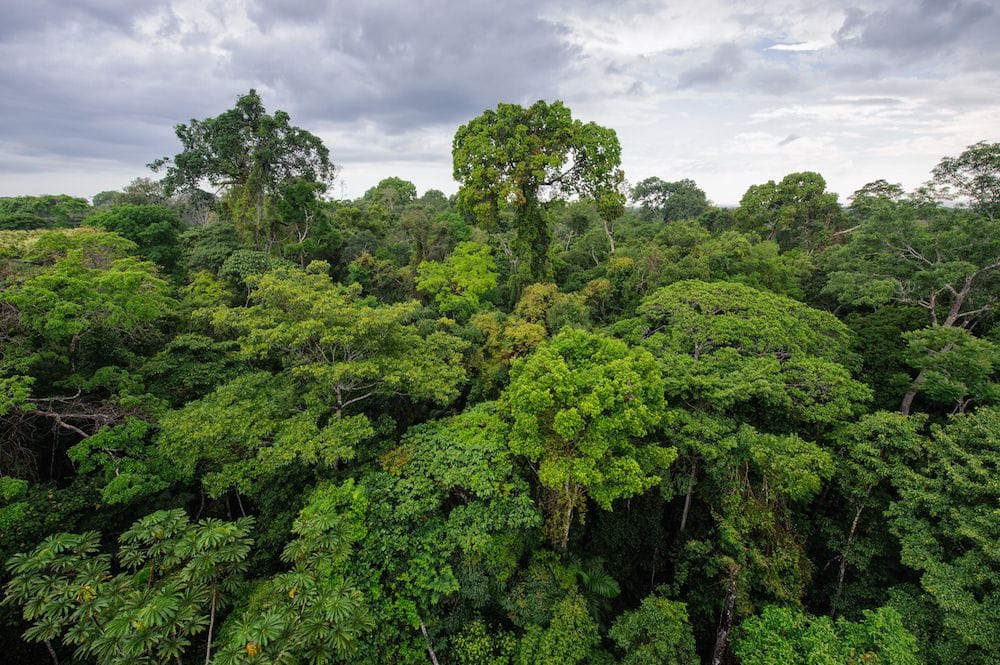
The Amazon rainforest is the biggest forest in the world with an area 2,300,000 square miles. The majority of the Amazon rainforest is 60 percent in Brazil, 13 percent in Peru, 10 percent in Colombia, and minor amounts in Bolivia, Ecuador, French Guiana, Guyana, Suriname and Venezuela.
Additionally, the Amazon rainforest represents more than half of the world’s remaining rainforests. It contains an estimated 390 billion individual trees and 16,000 species, including many species of myrtle, laurel, palm and acacia, as well as rosewood, Brazil nut and rubber trees.
Major wildlife includes jaguars, manatees, tapirs, red deer, capybaras, rosewoods and many other types of rodents and many types of monkeys. In addition, it houses a wide range of different animals including mammals, birds, fish and insects.
- Location: Bolivia, Brazil, Colombia, Ecuador, French Guiana, Guyana, Peru, Suriname, and Venezuela
- Area: 2,300,000 square miles (6,000,000 square km)


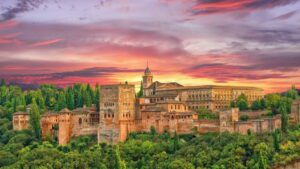
Hi, here is the list of 10 largest forests in the world
We’re a gaggle of volunteers and starting a new scheme in our
community. Your site provided us with valuable info to work on. You have done an impressive
process and our entire community will likely be thankful to
you.
Excellent goods from you, man. I’ve understand your stuff previous to and you’re just
extremely wonderful. I actually like what you’ve acquired here, certainly like what you’re saying and the way in which you say it.
You make it enjoyable and you still care for to keep it wise.
I can not wait to read far more from you. This is really
a terrific web site.